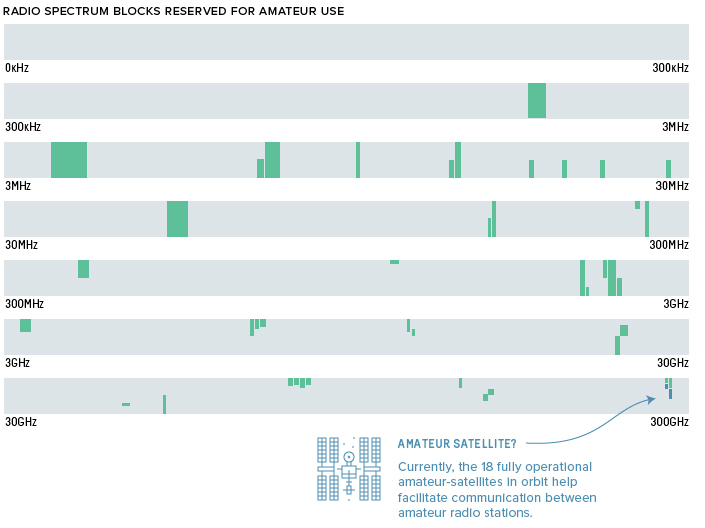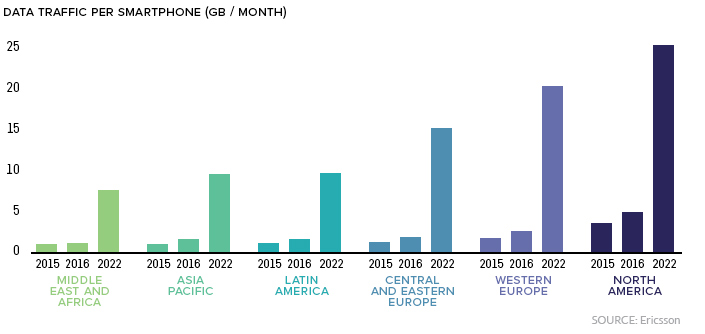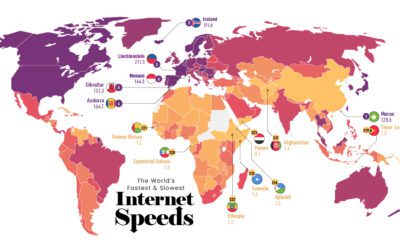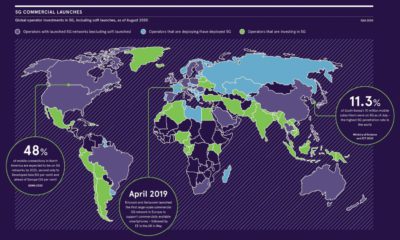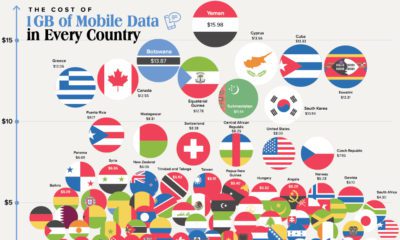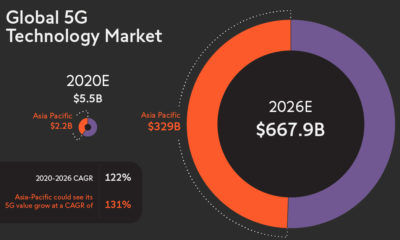As it turns out, the hottest real estate market may be one we can’t see. Everything from space exploration signals to HAM radios are vying for room on the radio spectrum, in which frequencies range from 3Hz to 3,000GHz. This spectrum acts as the “transportation system” for all wireless communication, and blocks of it are divvied up for specific uses. The map above, from the U.S. Department of Commerce, vividly illustrates the complexity of this allocation system.
Plots of “Land” on the Frequency Band
Nearly all of the radio spectrum is already divided into a number of civilian and military uses. Some of the most prominent blocks (turquoise on the map) are set aside for television and radio broadcasting, as well as various types of navigation and satellite communications. The spectrum also has a number of blocks dedicated to amateur radio and satellite.
It’s worth noting that the allocation map only lays out uses within a specific frequency, and that any number of licenses can exist within a frequency block. For categories like “fixed”, multiple licenses can exist in the same part of band provided they’re far enough apart to avoid signal interference. Most countries claim ownership over their airwaves, so they each have their own versions of the frequency allocation map. Here are a few others: UK, Canada, and South Africa.
The Spectrum Crunch
It’s predicted that mobile data traffic will skyrocket in coming years as consumers’ appetite for high quality video streaming continues to grow. Rapid increase in mobile data usage isn’t confined to specific markets. It’s a truly global phenomenon.
Rising data consumption, coupled with the explosion in IoT devices and the emergence of the 5G standard, means that space within the radio band is increasingly coming at a premium. In fact, periodic auctions for space on the spectrum see telecommunication companies shelling out billions of dollars for a piece of the pie. The spectrum auction run by the FCC in 2015 raised nearly $45 billion and 2017’s auction raised nearly $20 billion.
The hills are alive with data
The long awaited move to 5G is a hot topic in the telecommunications world, and for good reason. 5G is the next generation of wireless technology, which will deliver super-fast connections for smartphones and higher capacity for broadband networks. It’s estimated that 5G will be 100x faster than current 4G networks. For a fascinating and detailed look at the 5G rollout, check out the video below.
on But fast forward to the end of last week, and SVB was shuttered by regulators after a panic-induced bank run. So, how exactly did this happen? We dig in below.
Road to a Bank Run
SVB and its customers generally thrived during the low interest rate era, but as rates rose, SVB found itself more exposed to risk than a typical bank. Even so, at the end of 2022, the bank’s balance sheet showed no cause for alarm.
As well, the bank was viewed positively in a number of places. Most Wall Street analyst ratings were overwhelmingly positive on the bank’s stock, and Forbes had just added the bank to its Financial All-Stars list. Outward signs of trouble emerged on Wednesday, March 8th, when SVB surprised investors with news that the bank needed to raise more than $2 billion to shore up its balance sheet. The reaction from prominent venture capitalists was not positive, with Coatue Management, Union Square Ventures, and Peter Thiel’s Founders Fund moving to limit exposure to the 40-year-old bank. The influence of these firms is believed to have added fuel to the fire, and a bank run ensued. Also influencing decision making was the fact that SVB had the highest percentage of uninsured domestic deposits of all big banks. These totaled nearly $152 billion, or about 97% of all deposits. By the end of the day, customers had tried to withdraw $42 billion in deposits.
What Triggered the SVB Collapse?
While the collapse of SVB took place over the course of 44 hours, its roots trace back to the early pandemic years. In 2021, U.S. venture capital-backed companies raised a record $330 billion—double the amount seen in 2020. At the time, interest rates were at rock-bottom levels to help buoy the economy. Matt Levine sums up the situation well: “When interest rates are low everywhere, a dollar in 20 years is about as good as a dollar today, so a startup whose business model is “we will lose money for a decade building artificial intelligence, and then rake in lots of money in the far future” sounds pretty good. When interest rates are higher, a dollar today is better than a dollar tomorrow, so investors want cash flows. When interest rates were low for a long time, and suddenly become high, all the money that was rushing to your customers is suddenly cut off.” Source: Pitchbook Why is this important? During this time, SVB received billions of dollars from these venture-backed clients. In one year alone, their deposits increased 100%. They took these funds and invested them in longer-term bonds. As a result, this created a dangerous trap as the company expected rates would remain low. During this time, SVB invested in bonds at the top of the market. As interest rates rose higher and bond prices declined, SVB started taking major losses on their long-term bond holdings.
Losses Fueling a Liquidity Crunch
When SVB reported its fourth quarter results in early 2023, Moody’s Investor Service, a credit rating agency took notice. In early March, it said that SVB was at high risk for a downgrade due to its significant unrealized losses. In response, SVB looked to sell $2 billion of its investments at a loss to help boost liquidity for its struggling balance sheet. Soon, more hedge funds and venture investors realized SVB could be on thin ice. Depositors withdrew funds in droves, spurring a liquidity squeeze and prompting California regulators and the FDIC to step in and shut down the bank.
What Happens Now?
While much of SVB’s activity was focused on the tech sector, the bank’s shocking collapse has rattled a financial sector that is already on edge.
The four biggest U.S. banks lost a combined $52 billion the day before the SVB collapse. On Friday, other banking stocks saw double-digit drops, including Signature Bank (-23%), First Republic (-15%), and Silvergate Capital (-11%).
Source: Morningstar Direct. *Represents March 9 data, trading halted on March 10.
When the dust settles, it’s hard to predict the ripple effects that will emerge from this dramatic event. For investors, the Secretary of the Treasury Janet Yellen announced confidence in the banking system remaining resilient, noting that regulators have the proper tools in response to the issue.
But others have seen trouble brewing as far back as 2020 (or earlier) when commercial banking assets were skyrocketing and banks were buying bonds when rates were low.
